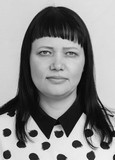Diagnostics of the functional state of athletes and engaged in fitness based on heart rate variability
Ключевые слова:
sport, fitness, functional state, heart rate variability, autonomic regulation type.Аннотация
Objective of the study was to assess heart rate variability and determine the type of autonomic regulation in athletes, as well as in people involved in fitness.
Methods and structure of the study. We examined 15 athletes, men aged 22-29 years, as well as 15 people involved in fitness, men aged 22-30 years. Both groups of subjects trained five to seven times a week for 2.5 hours, physical activity was of a mixed, predominantly anaerobic-aerobic nature, exercises of a speed-strength, strength orientation were performed.
Results and conclusions. The largest group of individuals was found with type III autonomic regulation both in the general sample and separately in each group. This type of regulation is the most favorable for adaptation, it is characterized by a moderate predominance of autonomous regulation of the heart rate, self-regulation is very effective for such individuals. Special attention should always be paid to individuals who belong to type IV; in the studied groups, a small number of individuals with this type of regulation were found. The method of HRV analysis allows you to identify the state of overtraining. No statistically significant differences were found for all indicators of variability, except for the TP indicator (total power of the spectrum) between athletes and people involved in fitness.
Библиографические ссылки
Alekseev R.V., Meigal A.Yu. Variabelnost ritma serdtsa sportsmenov razlichnykh spetsializatsiy i urovnya sportivnogo masterstva [Variability of the heart rate of athletes of various specializations and the level of sportsmanship]. Proceedings of the XXIII Congress of the Physiological Society named after I.P. Pavlov with international participation, 2017. pp. 2095-2097.
Zakharyeva N.N., Konyaev I.D., Stepanik I.A. Morfofiziologicheskiye pokazateli yunykh artistov baleta s razlichnym obyemom fizicheskikh nagruzok [Morphophysiological indicators of young ballet dancers with different amounts of physical activity]. Teoriya i praktika fizicheskoy kultury. 2022. No. 8. pp. 33-36.
Chainikov P.N., Cherkasova V.G., Muravyov S.V., Kulesh A.M. Variabelnost ritma serdtsa sportsmenov igrovykh vidov sporta, poluchayushchikh vyssheye obrazovaniye, v nachale trenirovochnogo sezona [Heart rate variability in team sports athletes receiving higher education at the beginning of the training season]. Sportivnaya meditsina: nauka i praktika. 2020. Vol. 10. No. 2. pp. 81-90.
Shlyk N.I., Gavrilova E.A. Variabelnost ritma serdtsa v ekspress-otsenke funktsionalnogo sostoyaniya sportsmena [Heart rate variability in the express assessment of the functional state of an athlete]. Prikladnaya sportivnaya nauka. 2015. No. 2. pp. 115-125.
Shlyk N.I., Lebedev E.S., Vershinina O.S. Otsenka kachestva trenirovochnogo protsessa u sportsmenov na osnove ekspress-analiza variabelnosti serdechnogo ritma s uchetom individualnogo tipa regulyatsii [Evaluation of the quality of the training process in athletes based on express analysis of heart rate variability, taking into account the individual type of regulation]. Teoriya i praktika fizicheskoy kultury. 2019. No. 2. pp. 18-20.
Shlyk N.I. Upravleniye trenirovochnym protsessom sportsmenov s uchetom individualnykh kharakteristik variabelnosti ritma serdtsa [Management of the training process of athletes, taking into account the individual characteristics of heart rate variability]. Fiziologiya cheloveka. 2016. Vol. 42. No. 6. pp. 81-91.

Дополнительные файлы
Опубликован
Как цитировать
Выпуск
Раздел
Лицензия

Это произведение доступно по лицензии Creative Commons «Attribution» («Атрибуция») 4.0 Всемирная.
